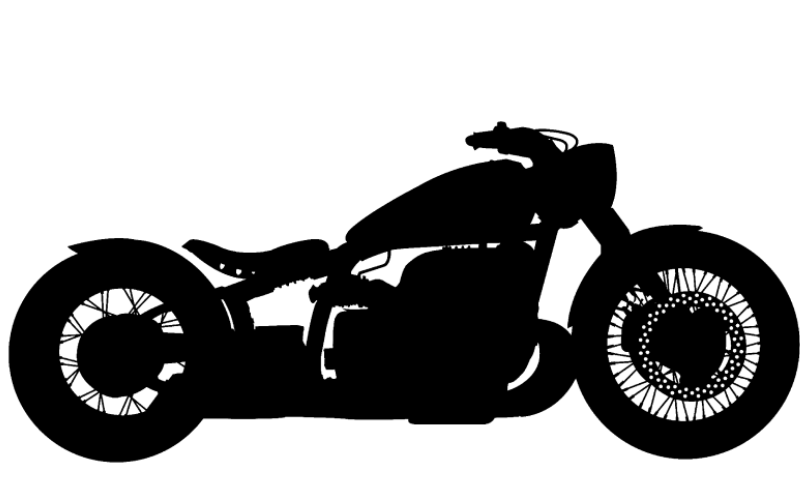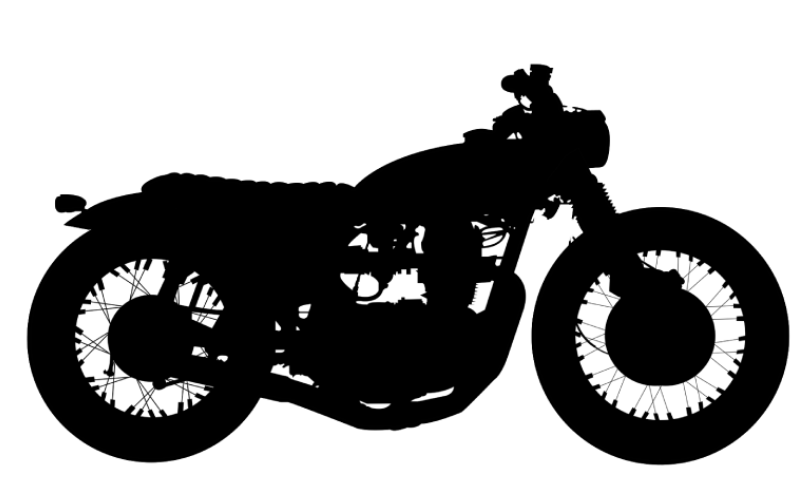SEARCH BY CATEGORIES
SEARCH BY INSPIRATIONS
- Air filters
- Brake & Clutch levers
- Electric box
- Exhaust
- Fenders
- Footpegs
- Front protections
- Front suspension
- Front suspension protections
- Fuel tanks
- Handle grips
- Handlebar
- Handlebar switch controls
- Headlights
- License plate holder
- Mirrors
- Mudguards
- Rear frame
- Suspensions
- Seats
- Silencers
- Speedometers
- Taillights
- Thermal strips
- Turn signals
- Air filters
- Belows front suspensions
- Brake & clutch levers
- Electric box
- Engine protection
- Exhaust
- Fenders
- Foot pegs
- Front suspensions
- Fuel tanks
- Handle grips
- Handlebar switch controls
- Handlebars
- Headlights
- License plate holder
- Mirrors
- Mudguards
- Rear frame
- Rear light
- Rear suspensions
- Seats
- Silencers
- Speedometers
- Thermal strips
- Turn signals
- Air filters
- Belows front suspensions
- Brake & Clutch levers
- Electric box
- Exhausts
- Fenders
- Foot pegs
- Front suspensions
- Fuel tanks
- Handle grips
- Handlebar switch controls
- Handlebars
- Headlights
- License plate holders
- Mirrors
- Mudguards
- Rear light
- Rear suspensions
- Seats
- Silencers
- Speedometers
- Thermal strips
- Turn signals
- Air filters
- Belows front suspension
- Brake & Clutch levers
- Electric box
- Exhaust
- Fenders
- Foot pegs
- Front protection
- Front suspensions
- Fuel tanks
- Handle grips
- Handlebar switch controls
- Handlebars
- Headlights
- License plate holders
- Mirrors
- Mudguards
- Rear frame
- Rear light
- Rear suspensions
- Seats
- Silencers
- Speedometers
- Thermal strips
- Turn signals
- Air filters
- Belows front suspensions
- Brake & Clutch levers
- Electric box
- Engine protection
- Exhausts
- Fenders
- Foot pegs
- Front suspensions
- Fuel tanks
- Handle grips
- Handlebar switch controls
- Handlebars
- Headlights
- License plate holders
- Mirrors
- Mudguards
- Rear frame
- Rear light
- Rear suspensions
- Seats
- Silencers
- Speedometers
- Thermal strips
- Turn signals

- Air filters
- Brake & Clutch levers
- Electric box
- Exhaust
- Fenders
- Footpegs
- Front protections
- Front suspension
- Front suspension protections
- Fuel tanks
- Handle grips
- Handlebar
- Handlebar switch controls
- Headlights
- License plate holder
- Mirrors
- Mudguards
- Rear frame
- Suspensions
- Seats
- Silencers
- Speedometers
- Taillights
- Thermal strips
- Turn signals

- Air filters
- Belows front suspensions
- Brake & clutch levers
- Electric box
- Engine protection
- Exhaust
- Fenders
- Foot pegs
- Front suspensions
- Fuel tanks
- Handle grips
- Handlebar switch controls
- Handlebars
- Headlights
- License plate holder
- Mirrors
- Mudguards
- Rear frame
- Rear light
- Rear suspensions
- Seats
- Silencers
- Speedometers
- Thermal strips
- Turn signals

- Air filters
- Belows front suspensions
- Brake & Clutch levers
- Electric box
- Exhausts
- Fenders
- Foot pegs
- Front suspensions
- Fuel tanks
- Handle grips
- Handlebar switch controls
- Handlebars
- Headlights
- License plate holders
- Mirrors
- Mudguards
- Rear light
- Rear suspensions
- Seats
- Silencers
- Speedometers
- Thermal strips
- Turn signals

- Air filters
- Belows front suspension
- Brake & Clutch levers
- Electric box
- Exhaust
- Fenders
- Foot pegs
- Front protection
- Front suspensions
- Fuel tanks
- Handle grips
- Handlebar switch controls
- Handlebars
- Headlights
- License plate holders
- Mirrors
- Mudguards
- Rear frame
- Rear light
- Rear suspensions
- Seats
- Silencers
- Speedometers
- Thermal strips
- Turn signals
- Air filters
- Belows front suspensions
- Brake & Clutch levers
- Electric box
- Engine protection
- Exhausts
- Fenders
- Foot pegs
- Front suspensions
- Fuel tanks
- Handle grips
- Handlebar switch controls
- Handlebars
- Headlights
- License plate holders
- Mirrors
- Mudguards
- Rear frame
- Rear light
- Rear suspensions
- Seats
- Silencers
- Speedometers
- Thermal strips
- Turn signals
PLUS DE MOTO
Add description, images, menus and links to your mega menu
A column with no settings can be used as a spacer
Link to your collections, sales and even external links
Add up to five columns
Add description, images, menus and links to your mega menu
A column with no settings can be used as a spacer
Link to your collections, sales and even external links
Add up to five columns
Add description, images, menus and links to your mega menu
A column with no settings can be used as a spacer
Link to your collections, sales and even external links
Add up to five columns
Add description, images, menus and links to your mega menu
A column with no settings can be used as a spacer
Link to your collections, sales and even external links
Add up to five columns
Brake & Clutch levers
motorcycle master cylinder
The brake master cylinder is a component of a motorcycle's braking system. It is located on the handlebars and is used to operate the braking system by converting the force exerted on the brake lever into hydraulic pressure which is then transmitted to the brake calipers.
It plays a crucial role in the safety of the motorcycle by allowing the rider to brake effectively.
What is the role of the motorcycle master cylinder?
The main role of the brake master cylinder in a motorcycle is to convert the force exerted on the brake lever into hydraulic pressure.
This pressure is then transmitted to the brake calipers, which use this pressure to press the brake pads against the discs or drums, thereby slowing or stopping the motorcycle.
The master cylinder therefore plays a crucial role in the safety of the motorcycle by allowing the rider to brake effectively.
What is the role of the motorcycle clutch lever?
The motorcycle clutch lever is a mechanical component that couples and decouples the engine from the motorcycle transmission.
It is located on the handlebars, and the rider uses it to operate the clutch. When the rider depresses the clutch lever, it uncouples the engine from the transmission, allowing the motorcycle to be shifted or put in neutral.
When the rider releases the clutch lever, the engine is re-coupled to the transmission, allowing the motorcycle to resume operation.
The clutch lever is therefore an important element for the proper functioning and safe operation of the motorcycle. The motorcycle clutch master cylinder can also be hydraulic as for braking.
What are the types of motorcycle master cylinders?
There are two main types of brake master cylinders for motorcycles:
- The axial master cylinder (standard because it is the most common):a piston that pushes the brake oil to the brake calipers. It is generally used on small and medium-displacement motorcycles, as it is simple to manufacture and maintain. It is coupled to axial brake calipers as well.
- Radial master cylinder: which are used on high-end motorcycles, It is lighter, more compact and more aesthetic. It also have a better pressure distribution and more braking power.
There are also adaptive master cylinders that are equipped with a system that automatically adjusts the distance between the brake handle and the lever.
It also allows you to adjust the braking sensitivity (more or less "bite").
This system is used to facilitate the use of the motorcycle for riders of different sizes and to improve riding comfort and therefore safety.
How to distinguish the type of braking on my motorcycle (Radial or Axial)?
These thermals are identical to the name of the brake caliper. You must take as a reference point your wheel. In the axis of the wheel then said "Axial" and in the direction of the radius of the wheel then said "Radial".
If you want to know more, you can consult our blog articles.
Why change the motorcycle master cylinder?
There are several reasons why it may be necessary to change the brake master cylinder on a motorcycle:
- Normal wear and tear: The master cylinder is a mechanical component that experiences considerable forces when the rider presses the brake lever. Over time, the parts can wear out and become less effective. If you notice that your motorcycle is not braking as well as it used to, the master cylinder may be worn out and in need of replacement. On some higher-end master cylinders, there are kits that allow you to replace only the failed internal components.
- Oil leakage: The master cylinder is filled with brake oil which is used to transmit pressure from the brake lever to the brake calipers. If you notice brake oil leaking around the brake lever, the master cylinder seal may be damaged and may need to be replaced.
- Performance upgrade: Some riders want to improve the performance of their motorcycle and replace the master cylinder with a higher performance model that provides better braking power and pressure distribution.
It is important to note that these are general cases, so it is important to consult a mechanic to check the condition of your master cylinder and decide if a replacement is necessary.
How to choose the right motorcycle master cylinder?
There are several factors to consider when choosing a new brake master cylinder for your motorcycle:
- Compatibility: Make sure the motorcycle brake master cylinder you purchase is compatible. It is important to check your engine displacement and brake type (disc or drum) to ensure that the new master cylinder is compatible.
- Size: It is important to choose the right size master cylinder for your motorcycle. The larger your engine displacement, the larger the master cylinder must be to generate enough pressure to brake effectively. Be careful, you must always keep a homogeneity with the caliper(s).
- Type: There are different types of master cylinders, such as radial or axial piston master cylinder, it is important to choose the right type according to your needs and preferences.
- Brand: It is important to choose a good quality master cylinder to ensure reliability and durability.
- Installation: It is important to check if the installation of the master cylinder is easy and if the necessary tools are included. It is also important to verify that the installation instructions are clear and easy to follow.
It is important to note that these criteria are general and it is important to consult a mechanic to verify which master cylinder is best for your motorcycle.
It may also be helpful to check out motorcycle forums and user reviews for information on the different models available.
How to bleed the motorcycle master cylinder? (be careful with the brake and clutch switches)
Bleeding the motorcycle master cylinder is a process that consists of removing the air present in the braking system. This is necessary when air has entered the system, which can cause a malfunction or a reduction in braking power. Here are the general steps for bleeding a brake master cylinder:
- Prepare the necessary equipment: You will need a brake bleeder kit, clean brake oil and a tool to loosen the brake fittings.
- Locate the brake master cylinder: The brake master cylinder is usually located on the handlebars of the motorcycle and is often covered by a cover.
- Loosen the brake bleeds: Use the appropriate tool to loosen the brake bleeds located on the brake master cylinder and caliper. Be prepared to catch the oil that will leak out when you loosen the fittings.
- Bleed the system: Use the brake bleed kit to bleed the system. Depending on the kit, it may be necessary to squeeze a pump to suck out the air or squeeze the brake lever to release the air.
- Check the oil level: When the air is out, fill the master cylinder with clean brake oil to the proper level. During this process, make sure you always have fluid in your jar. The type of oil to use is usually marked on the brake reservoir cap.
- Reinstall the brake fittings: Re-tighten the brake fittings and check for oil leakage.
- Test the brakes: Test the brakes to make sure it is working properly. It is important to do this on safe ground and at moderate speeds. You can also wait several hours to see if there are still air bubbles in the system. These will come back up and your lever will be "slack", so you will have to start over.
This is a major component in the safety of your motorcycle. We advise you to call a professional.
You can also consult a large number of explanatory videos on Youtube.
What are the signs of a broken motorcycle master cylinder?
Signs of a broken motorcycle master cylinder can include a soft or spongy feeling brake lever, difficulty braking, or a brake lever that sinks to the handlebar without resistance.
Another sign may be visible leakage of brake fluid from the master cylinder. It is important to have any issues with the master cylinder checked by a mechanic as soon as possible to ensure proper braking function and safety while riding.
What happens if the motorcycle master cylinder fails?
If a motorcycle's master cylinder fails, it can cause the brakes to stop working or to not work as effectively. This can lead to difficulty stopping the motorcycle, which can be dangerous in traffic or when trying to avoid obstacles.
In some cases, a failed master cylinder can also cause the brakes to lock up, which can result in a crash.
It is important to have a motorcycle's braking system inspected and serviced regularly to ensure that the master cylinder and other components are in good working order.
Does the size of a motorcycle master cylinder matter?
The size of a motorcycle master cylinder can affect the performance of the braking system. A larger master cylinder can provide more leverage, making it easier to apply the brakes with less effort.
A smaller master cylinder can make the brake lever or pedal harder to press, which can make it more difficult to stop the motorcycle quickly.
However, the size of the motorcycle master cylinder must be matched with the size of the brake calipers and the size of the brake pads. A larger master cylinder may not be appropriate if the brake calipers or pads are small, as this can cause the brakes to be less effective.
Similarly, a smaller master cylinder may not be appropriate if the brake calipers or pads are large, as this can cause the brake lever or pedal to feel too hard.
It is important to use the correct size of master cylinder for the specific make and model of motorcycle or your news brake calipers.






































